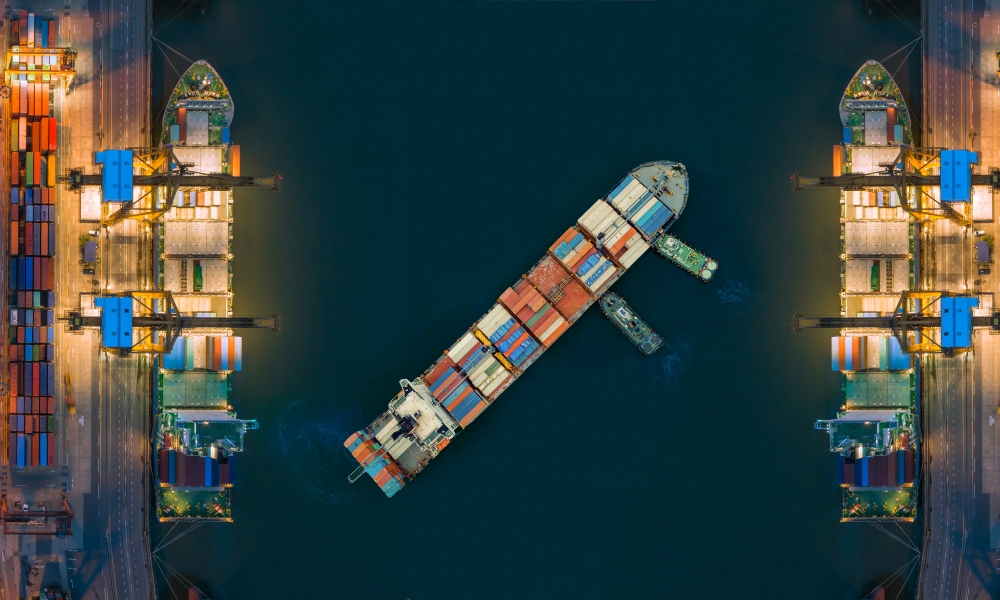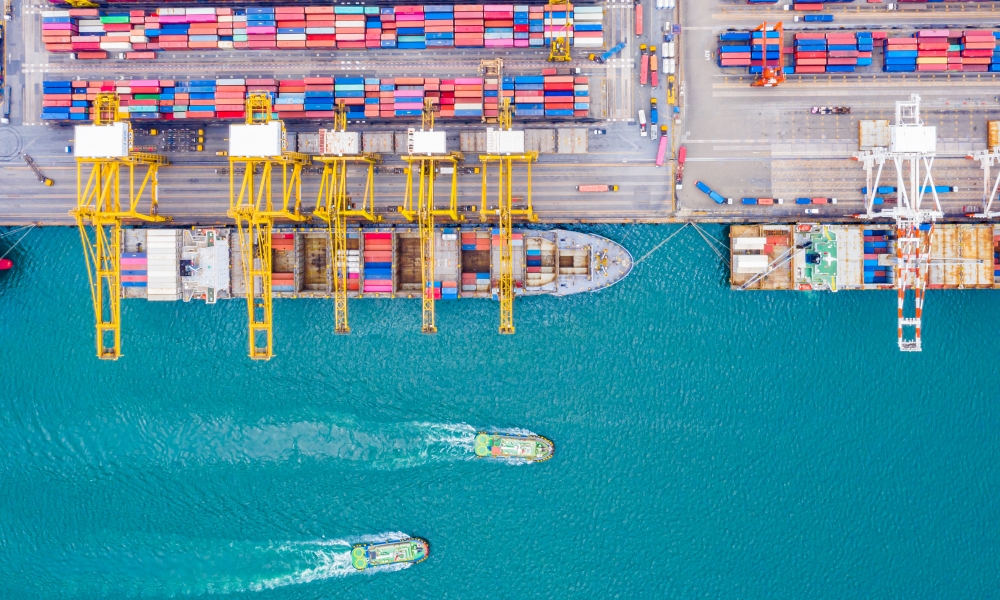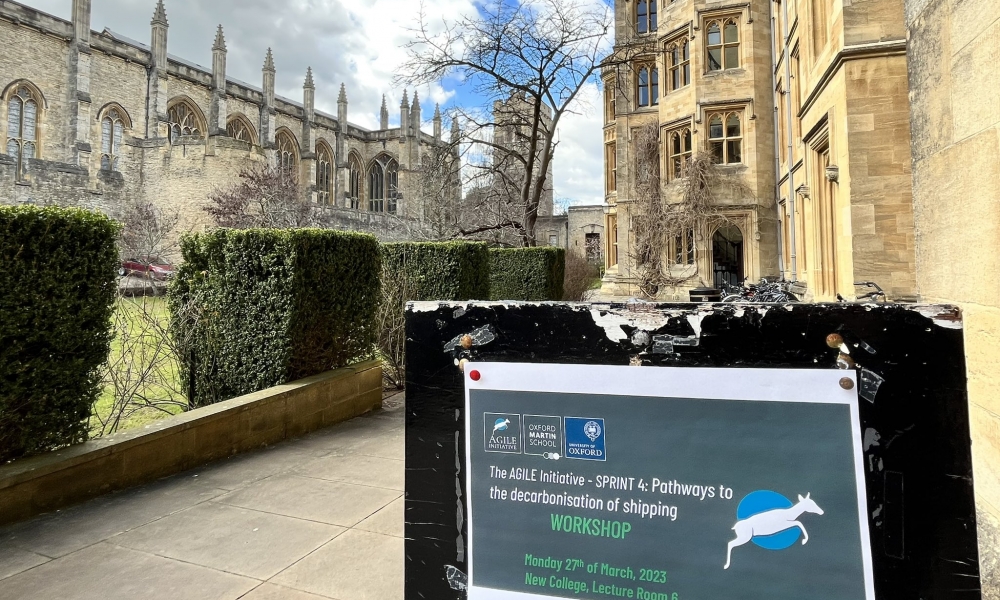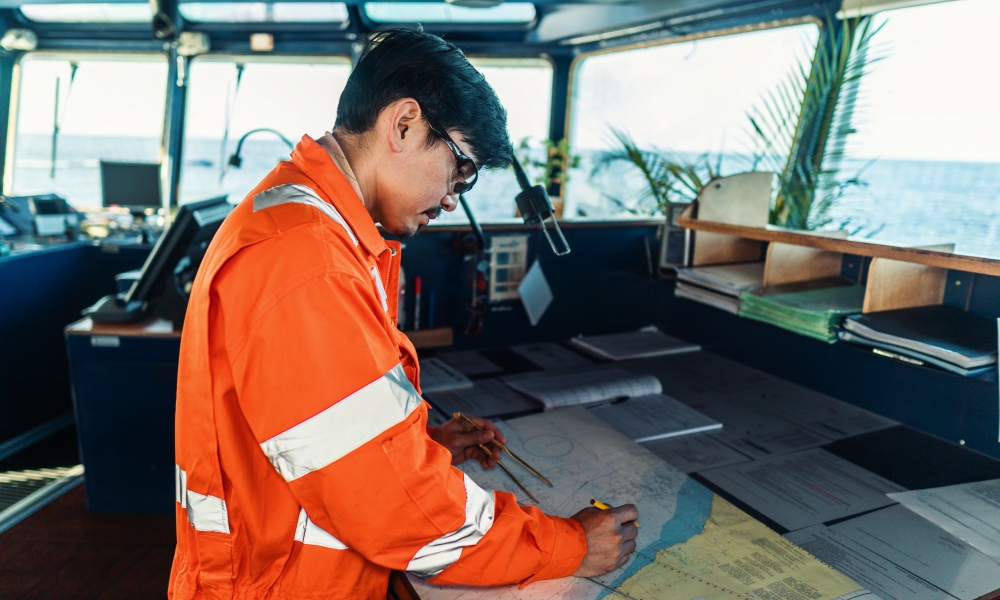How can maritime shipping transition to green ammonia as fuel?
This Sprint ran from September 2022-September 2023
More sprints
- Can we solve the “spin-up” problem in Earth System Modelling?
- How can we manage uncertainties in habitat greenhouse gas emissions?
- What do we need to know to safely store CO2 beneath our shelf seas?

The Challenges
The shipping sector is responsible for almost 3% of global emissions. The International Maritime Organisation (IMO) has set a target of net zero emissions by 2050. Direct electrification is not likely to be suitable for long-distance shipping routes so zero carbon fuels are required. Ammonia has the right balance of density and comparatively affordable production, making it a leading candidate for an alternative maritime fuel if the ammonia is produced in a sustainable fashion, i.e. green ammonia.
To address the challenges of shipping decarbonisation, the Sprint team aimed to:
- Identify the cost-efficient pathways for converting large amounts of shipping to new fuel
- Identify the most critical types of ships, maritime routes, and ports that have the greatest impact on the overall problem (i.e. reducing GHGs)
- Identify policy mechanisms that can accelerate the uptake of new fuel.
The Solutions
By combining a global green hydrogen and ammonia production model with a global ports and shipping model, the team have produced the first comprehensive and spatially granular global picture of supply and demand for the future (2050) green ammonia economy. It combines a port-level fuel demand model (for 1,360 ports) with future shipping trade scenarios and a spatial optimisation model for green ammonia production, storage, and transport to find the best global locations to meet future demand for shipping fuel (i.e. it builds a cost-optimal green ammonia fuel supply chain).
Findings:
- Targeting the largest ports first for green ammonia fuel demand would enable a substantial portion of shipping to be decarbonised: just the top 50 would meet around 45.7% of the cumulative demand.
- Efficient production locations are paired with regional concentrations of demand, due to the cost of transporting ammonia over long distances. Because of the low cost of solar, production of green ammonia also tends to be clustered relatively close to the equator.
- Australia is the most important global supplier of exported green ammonia, providing almost 50% of the total exported, due to the relatively short shipping distance from Australia to Asian demand hubs, as well as Australia’s significant amounts of available land.
- Total investment need is estimated to be between USB 1.98-2.25 trillion, underlining the benefits of accelerated progression down the renewable technology cost curves associated with more ambitious climate policies.
- Green ammonia as a maritime fuel will significantly shift the spatial pattern of the maritime fuel supply chain compared to the existing fuel supply network.
The Pathway
This Sprint carried out the majority of the research into the first six months so that the model and indicative results could enhance stakeholder engagement. Carlo Palazzi was employed as a Policy Liaison Officer and had regular meetings with the Department for Transport (DfT, UK). This was a key role that enabled direct regular stakeholder engagement to shape the research. Presenting the detailed green ammonia supply optimisation model to DfT, the Global Maritime Forum and at the London International Shipping Week forged further connections, including a potential collaboration with the Port of London Authority and Associated British Ports.
This Sprint brought together researchers with expertise in chemical engineering, infrastructure, and public policy to plan for the UK’s transition to net zero shipping. Team members came from Oxford University’s Department of Engineering Science, the School of Geography and the Environment, the Environmental Change Institute, and the Smith School of Enterprise and the Environment, as well as external collaborators from University College London, and the DfT.


















